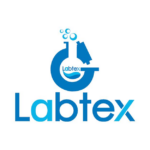Human lung Model for Education
৳ 650.00
- Lung Model for Training and Education
- Size: 9 Inch x 6 inches (Approx.)
- Made in India
The Human Lung Model is an artificial model that is ideal for education and training.
A human lung model is a representation or simulation of the structure and function of the human lungs. These models are used for various purposes such as education, research, medical training, and product development. Human lung models can range from simple anatomical diagrams to complex, functioning replicas that mimic the physiological processes of breathing and gas exchange.
Human lung models serve various purposes across different fields, including education, research, medical training, and product development. Here are some specific uses of human lung models:
1. Medical Education: Human lung models are extensively used in medical schools and training programs to teach students about the anatomy, physiology, and mechanics of the respiratory system. They provide a tangible representation of the complex structures and functions of the lungs, trachea, bronchi, and alveoli, enhancing students’ understanding of respiratory health and disease.
2. Respiratory Disease Research: Researchers use human lung models to study the underlying mechanisms of respiratory diseases such as asthma, chronic obstructive pulmonary disease (COPD), lung cancer, and pulmonary fibrosis. These models enable scientists to investigate disease progression, test potential treatments, and develop new therapeutic strategies.
3. Drug Development and Testing: Pharmaceutical companies use human lung models to evaluate the efficacy and safety of respiratory medications, inhalation therapies, and drug delivery systems. These models help researchers assess how drugs interact with lung tissues, their absorption rates, and potential side effects, facilitating the development of novel therapeutics.
4. Surgical Planning and Simulation: Surgeons utilize 3D-printed human lung models derived from medical imaging data for preoperative planning and simulation of complex lung surgeries. These models allow surgeons to visualize patient-specific anatomy, identify anatomical variations or abnormalities, and practice surgical procedures, leading to improved surgical outcomes and patient safety.
5. Patient Education: Human lung models are valuable tools for patient education and communication, helping individuals understand their respiratory conditions, treatment options, and lifestyle modifications. Visual representations of lung anatomy and function can empower patients to actively participate in their healthcare decisions and adhere to treatment plans.
6. Emergency Response Training: Emergency medical personnel and first responders use human lung models during training exercises to simulate respiratory emergencies such as airway obstruction, pneumothorax, or respiratory distress. These models enable trainees to practice airway management techniques, perform chest compressions, and administer emergency interventions in a realistic setting.
7. Environmental and Occupational Health Studies: Environmental researchers and occupational health professionals use human lung models to assess the impact of air pollution, occupational hazards, and environmental toxins on respiratory health. These models help evaluate respiratory exposure risks, investigate lung function impairment, and develop preventive measures to protect public health.
Overall, human lung models play a crucial role in advancing our understanding of respiratory biology, improving clinical care, and promoting respiratory health and well-being across diverse applications and disciplines.
Vendor Information
- Store Name: Labtex Bangladesh
- Vendor: Labtex Bangladesh
-
Address:
Eastern Kamlapur Complex (1st Floor), 64-68, North Kamalapur, [Opposite of Kamlapur Rail Station]
Dhaka
Dhaka
1217 - No ratings found yet!
-
-
-
৳ 4,000.00
Analog Multimeter YX360TRF, Sanwa Japan
৳ 4,000.00
















Reviews
There are no reviews yet.